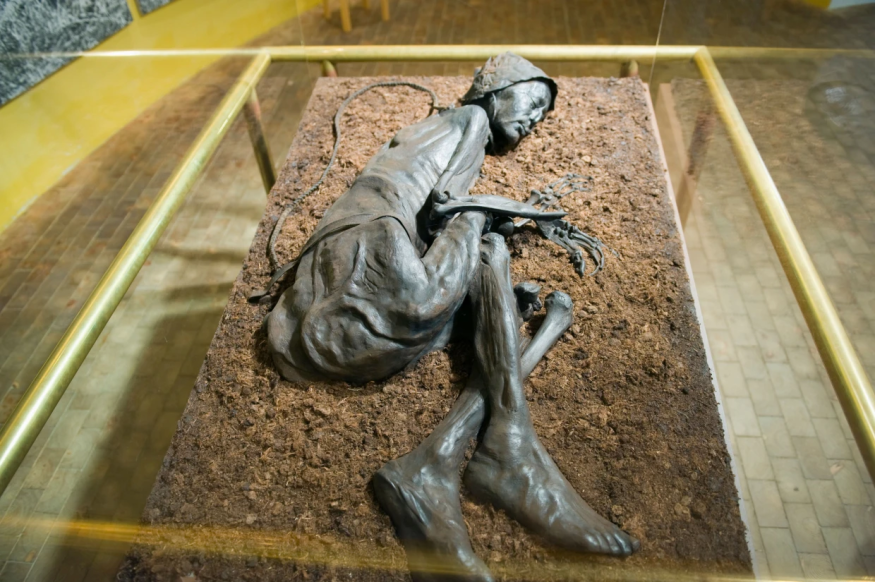Archaeologists have found the old bones of a person who had been ritually sacrificed in Denmark over 5,000 years ago. The remains were found near the remains of a flint ax and animal bones. The researchers are not sure about the sex or age of the person whose remains were found.
However, they believe that the body was placed in the bog on purpose during the Danish Neolithic, which was the early phase of the New Stone Age. The leader of the excavation, Emil Struve, an archaeologist and curator at the ROMU museums in Roskilde, said that human sacrifices were known to have happened during this period.
Many bog bodies have been discovered in northwestern Europe, particularly in Denmark, Germany, the Netherlands, and Britain. These areas have a history of human sacrifices in bogs that lasted for several thousand years. Struve explained that there are several different bog bodies in the area where the latest discovery was made and that the tradition of human sacrifices in bogs goes back to the Neolithic period.
Excavation Site
The ROMU archaeological team discovered the most recent set of remains in October during an excavation that was required before the construction of a housing development. The site was a bog near the town of Stenløse on the island of Zealand, just northwest of Copenhagen.
Danish law requires that archaeologists examine all land that will be developed, and the bones were found during a test excavation at the site. Struve said that the first bones of the Stenløse bog body were discovered during this excavation. The archaeologists will conduct a full excavation of the site in the spring when the ground has thawed.
The early excavations have uncovered leg skeletons, a pelvis bone, and a portion of a lower jaw along with some teeth that are still bound. The other parts of the body were not preserved because they were outside of the protective layer of peat in the bog. Struve hopes that the pelvis will allow them to determine the sex of the body and that the wear on the teeth may indicate the person's age.

Body in a Bog
In addition, the teeth could be a source of ancient DNA, which could provide more information about the person's identity. Struve said that the flint ax head found near the body was not polished and may not have ever been used, which suggests that it may have been an offering as well. The oldest known bog body in the world, known as Koelbjerg Man, was found in Denmark in the 1940s and may date back to 10,000 years ago.
Some other bog bodies date back to the Iron Age in the region, about 2,500 years ago. One of the most famous and well-preserved bog bodies is Tollund Man, which was discovered on Denmark's Jutland Peninsula in 1950 and is thought to have been sacrificed around 400 BCE, as reported by Live Science.

Some of the bog bodies may have been people who accidentally drowned after falling into the water, but archaeologists believe that most of them were killed on purpose, possibly as human sacrifices during times of famine or other disasters. Miranda Aldhouse-Green, a professor emeritus of history, archaeology, and religion at Cardiff University in the UK, and the author of "Bog Bodies Uncovered: Solving Europe's Ancient Mystery" said that ancient people were likely aware that bogs could preserve bodies. She explained that placing a body in a bog would prevent it from decaying and that it would remain "between the worlds of the living and the dead."
RELATED ARTICLE: Child Sacrifice Victims Unearthed in Peru; 76 Skeletons Reveal Evidence That the Children's Hearts Were Removed
Check out more news and information on Archeology in Science Times.












